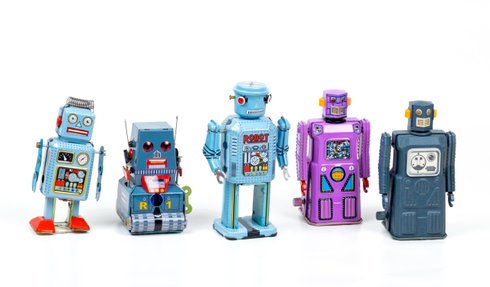I’m sure you’ve heard the cliches: GenZ’ers have no interest in any history prior to their existence. Millennials don’t have a strong work ethic. GenX’ers are bitter because they left school with immense debt only to enter a saturated job market. (Who me, bitter?)Boomers aren’t tech savvy or open to innovation. Tweets and pages and posts are filled with the misperceptions people have about the Generations.
Invaluable Age-Related Qualities
Despite some negative press, each age group has distinct characteristics and positive professional attributes that they provide to the workforce. To generalize, younger employees are innovative and eager to implement change. More experienced workers have gained leadership and management skills that can only come from a years-long career. For the first time in modern history, there are five generations are active in the workplace (six if you know any spry octogenarians still bringing home the bacon).Insightful employers and successful companies are tapping into the unique skills, experience and perspectives each generation brings to the table.An age-diverse workforce creates an environment flush with the right combination of building blocks needed for success in today’s age-diverse market.
Accentuate the Positive
Each of the generations currently in the workforce has distinct life experiences and points of view. Let’s take a look at a few age-specific qualities and see why companies are incorporating cross-generational mentorships – the pairing of employees from different generations for guidance and a better understanding of their attributes, to their advantage.
The Greatest Generation
Though there may not be many of the Greatest Generation left in the workplace, their influence on society and business shouldn’t be overlooked. The Greatest Generation is a term coined by Tom Brokaw’s book of the same name. This generation came of age during World War II. After the war, soldiers returned to the States and many working women returned home to rebuild their families and the country. This is a generation that suffered many personal sacrifices but turned that struggle into work ethic, commitment and personal and fiscal responsibility that created one of the most productive and industrious periods in modern U.S. history.
The Silent Generation/Traditionalists
Traditionalists, sometimes referred to as The Silent Generation are employees who were born in 1945 or prior – this means they’re now at least 74 years old. Many of them have now retired. But there are still people of this generation actively engaged in the workforce.
Traditionalists have been in the workforce the longest. Thanks to this, they carry a wealth of knowledge and experience. They grew up during harder times which makes them known for their fortitude, persistence, and dedication. Traditionalists don’t give up at the first sign of failure. One of the most significant advantages is this generation’s excellent interpersonal skills. They grew up before the onslaught of today’s technologies and have more experience dealing with people face-to-face. Therefore, they are more adept at reading body language and nonverbal cues. They also tend to have excellent emotional intelligence.
Baby Boomers
The children of the “Greatest Generation”, the Baby Boomers were born after the end of World War II between 1946 and 1964, making them 55–73 years old, as of 2019. The Baby Boomers became a cultural phenomenon due to their sheer number. By 1964, there were nearly 72.5 million baby boomers, which was considerably larger than prior generations.
Due to their exceptional population, they grew up having to compete for jobs and resources resulting in many extraordinarily hard-working and dedicated employees. Some will not hesitate to forsake work-life balance to achieve their goals. There were many industrial advances created by the war. Boomers took advantage of an era rife with ingenuity and production. Though, viewed as workaholics, Baby Boomers naturally tend to be goal-oriented, driven, and self-reliant individuals. They are not afraid to do what it takes to succeed. While they are passionate about success, it’s not at the expense of others. Baby Boomers work well in teams and show loyalty to their employers.
Generation X
Generation X’ers, born between 1965 and 1980, are now 39–54 years old. As the generation following the “Baby Boom,” there are fewer Gen X’ers compared with previous generations. They earned the nickname “latchkey kids” as many of them grew up in either a single parent household or with two parents who worked outside the home.
This upbringing helped create an era of independent workers who are resourceful and self-reliant. Generation X tends to be more highly educated than previous their parents and grandparents. They are known to be adaptable, flexible and unafraid to question authority making for excellent independent workers and creative problem-solvers. Due to their mid-timeline positioning, Gen X’ers exhibit qualities associated with both their Baby Boomer parents and next-generation Millennials. “While Gen X may be equally capable at digital tasks as millennials, they also show a mastery of conventional leadership skills more on par with leaders of the baby boomer generation” and therefore may have the most influence on shaping how we work, observes CNBC.
After watching their parents work excessive hours, this X’ers typically value work-life balance. They are also more likely to leave companies in search of a more fulfilling career or life. Generation X has a reputation for valuing information and learning making them more adept at embracing new technologies, compared with their elders. It also makes them strong champions of process improvement.
Millennials
Ah, Millennials. They get a bad rap. There is disagreement about the age ranges of the most recent generations. But, typically, anyone born between 1981 to 1996 is considered to be a Millennial. Millennials are currently 23–38 years old. As of 2014, this generation replaced Baby Boomers as having the largest population in the US. They also go by the names Generation Y and the Net Generation.
One significant distinction between Millennials and the previous generations is their familiarity with technology from a young age. Millennials tend to be very digitally savvy and entrepreneurial. Some early research showed Millennials to be self-involved; however, in actuality, they tend to be civic-minded individuals showing a keen interest in the welfare of their community and environment. They also show strong support for diversity, social responsibility, and sustainability. Millennials enjoy casual, open dialogue with coworkers and managers. They expect regular, honest feedback and thrive in collaborative environments. This generation embraces ongoing learning and advancement opportunities. They tend to be confident and ambitious, but are likely to place family priorities in front of career goals or raises.
Generation Z
Generation Z is the youngest generation currently in the workforce. They were born between 1995 and 2010. They peak at 24 years old in 2019. Generation Z grew up during the 2008 financial crisis and the resulting fallout. Therefore, this generation is more cautious and pragmatic than previous generations.
Gen Z is considered even more tech-savvy than Gen Y. They are the first generation where social media and collaborative technology use is native. Therefore some believe they can be excessively reliant on technology. They are reported to have shorter attention spans than previous generations. However, they still value face-to-face communication. Though it may be through video conferencing. And they are more accustomed to diversity and progressive social norms than previous generations.
Generation Z tends to be creative, open-minded, and more motivated by flexible work-life arrangements than by money. They tend to feel strongly about social responsibility, and like Millennials also care deeply about environmental awareness and leading healthy lifestyles. While these digital natives are inherently independent, they do enjoy working in small teams.
Cross-Generational Exchange
The first step to promoting cross-generational sharing is acknowledging the valuable insights, experiences, and points of view each generation has to offer. You can help your employees and colleagues by sharing with them the information discussed above.
Once everyone is aware of the value to be gained, you can start harnessing advantages. This can occur through team collaboration and the promotion of mutual mentorship. Cross-learning opportunities and team collaboration will help ensure you achieve the perfect balance of generational knowledge exchange.
Team Collaboration
In many instances, the generations aren’t that different at all. Age diverse employees can be more alike than people initially think. Especially when it comes to workplace values and attitudes.
Four of the five generations are known for preferring face-to-face interactions and desiring team collaboration. Use similarities like this to create teams that work well together based on shared strategies. Plus, consistent collaboration exercises will create regular opportunities for cross-generational sharing. Multi-generational teams foster two-way mutual mentorship. Even when teams are not co-located, video conferencing and screen sharing can be used to support collaboration.
Top-Down Mentorship
The traditional mentorship relationship involves a senior employee teaching and overseeing a junior team member. And in the case of a multi-generational workplace, this can provide several significant advantages, both to younger employees, as well as to the company overall.
Traditionalists and Baby Boomers have a wealth of wisdom to share with the younger generations. Their technical skills may be out of date. But, their emotional intelligence, interpersonal skills, and relationship wisdom are incredibly valuable. They can help guide younger generations through difficult team or customer dynamics, as well as coach them to become more caring and emotionally intelligent leaders. Many Millennials today are achieving high-level managerial roles before gaining any leadership training or experience producing disastrous decisions and frustrated employees and customers. Yeah, you Zuck.
Traditionalists and Boomers are more adept at understanding what motivates a variety of individuals. They can use this knowledge to help younger managers learn how to be leaders, and how best to drive, challenge, guide and reward their teams.
Traditionalists, Boomers, and Gen X’ers have also gained a wealth of business intuition and organizational knowledge that younger employees still lack. For example, someone of Generation Z may have an innovative idea for process improvement, one that could save the company hundreds of labor hours every year, but, as a newer employee, not have the know how to communicate that idea to higher-ups, or to get it successfully implemented. Taking advice from more experienced colleagues can turn that idea into action.
Bottom-Up Mentorship
To get the most out of a generationally diverse workplace, it’s critical to appreciate insights from all age ranges and levels of experience, including insights from younger generations to the older. For instance, the younger generations are incredibly tech-savvy; therefore it is vital they help coach older generations through new tech developments.
Millennials and Generation Z have a wealth of technological intelligence that should be used to help the company and older generations stay on top of new trends and industry developments. They can also help decipher new slang or tech jargon and provide one-on-one walkthroughs and training of apps and tools. For example, a Gen Z employee could quickly jump on an instant conference call or online meeting with screen sharing to walk a Boomer through a new app they may find challenging.
The younger generation’s focus on social responsibility and environmental issues is also a benefit to the business. And their preference for diversity ensures your business is equitable and inclusive resulting in greater innovation and creativity. Plus, the younger generations’ emphasis on work-life balance can result in beneficial policy improvements that affect the workforce company-wide.
Generational Balance
In some situations, the views and approaches of different generations can level each other out. For instance, Traditionalists, Boomers, and Gen Z are very pragmatic. This can act as the perfect counterpoint to Gen X and Millennials willingness to experiment and take risks.
Experienced employees tend to already be aware of approaches that have been attempted but failed in the past, allowing them to better evaluate new proposals, initiatives, and potential improvements. In contrast, inspired Millennials and Generation Z’ers may come up with never been thought of approaches to unsolved problems.
Gen X and Gen Y typically have broader and multi-industry experience than past generations due to a greater willingness to switch companies. This cache of work experience can result in more awareness of industry best practices and methods for improving “tried and true” tactics.
The educational backgrounds and analytical minds of Gen X through Gen Z can be used to help test and understand new data and ideas. Traditionalists and Baby Boomers, on the other hand, are in an excellent position to focus on the big picture. They can also help ensure the personal focus isn’t lost among an overwhelming volume of data.
Multi-Gen Management Works Both Ways
Do you already have a multigenerational workplace? Is it positive or is there a lack of cohesion between the generations? While some may be wary of a multigenerational workforce, this can be the optimal way to staff your business. If you’re willing and able to develop a sense of inclusion and collaboration, you can bring in distinct generational insights that can lead to a better work environment and a more successful company.
If workers are having a difficult time getting along with someone from another generation, remedy this by promoting collaboration and mutual mentorship. Leveraging insights, viewpoints, and experiences of each generation will result in significant advantages, both for your employees and your business.




